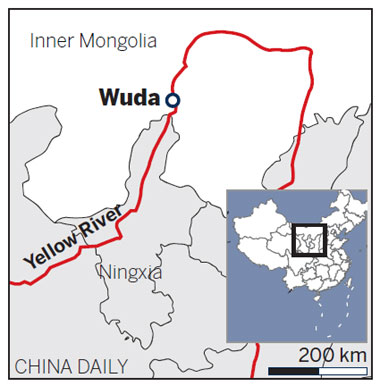Had it not been for coal mining, Wang Jun may never have made his most important discovery: a forest buried by a volcanic eruption almost 300 million years ago.
To be able to excavate the site, just west of Wuda district in the Inner Mongolia autonomous region, he needed both the mining industry and the authorities on board in 2007.
"We wouldn't have got access to the large areas of exposed tuff (rock made of consolidated ash) if the mine workers hadn't helped," the paleobotanist said.
Yet, today, in order for his precious find to survive, Wang says the diggers must fall silent in parts of Wuda coal mine. He has appealed to the government in Wuhai, the nearest city, to create a preservation area to prevent future mining activities around the vegetational equivalent of Pompeii, the ancient Roman city in Italy that was well preserved by volcanic ash.
|
 |
"At least we need to preserve one area for future generations, researchers and whoever is interested because the scientific value of the area is far beyond its economic value," said Wang, 44.
Authorities launched a program of intensive open-pit mining in 2006 to halt a massive coal seam fire, which occurs when coal deposits smolder underground.
Wang, who is based at the Chinese Academy of Sciences' Nanjing Institute of Geology and Palaeontology, said he thought the project had drawn to a close in 2009. However, he said he was surprised to find that it was continuing during his recent visit in March 2012.
Officials are still studying his proposal, which includes a detailed map of the area. However, he warned: "If no action is taken, the whole area might be gone in a short time. In the future, we may not be able to provide any actual proof that this vegetational Pompeii existed."
In a paper in the Proceedings of the National Academy of Sciences (the official journal of the United States National Academy of Sciences) in February, Wang, one of the co-authors, writes that the forest, dating back 298 million years, was preserved by fallen volcanic ash in a manner like Pompeii.
Moreover, he was able to reconstruct more than 1,000 square meters of the ancient forest, with pictures depicting the exact location of each tree and what they looked like.
"It is the closest we can get to know about ancient forests in that time interval. All the previous images in that period, even in textbooks, were not accurate ones," he said.
